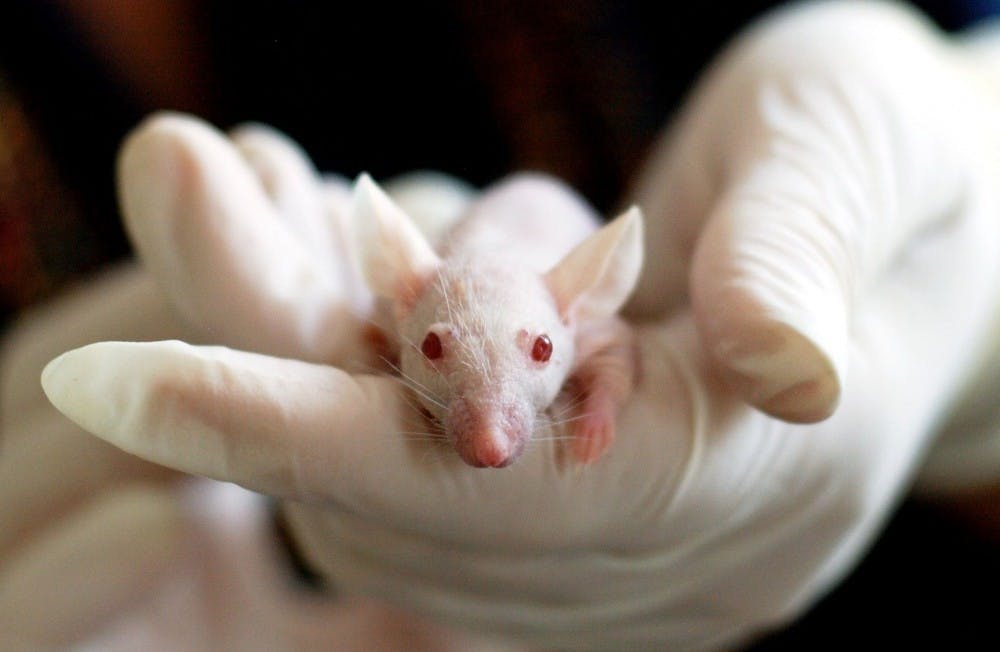Animal models, especially mice, are customarily used to study disease pathology, but it is a somewhat controversial practice in terms of cost, ethical aspects and predictivity for humans. The Center for Alternatives to Animal Testing (CAAT) in the Bloomberg School of Public Health is a part of the effort to move away from vertebrate medical research. To that end, they recently received a grant of almost $850,000 from the U.S. Environmental Protection Agency (EPA).
Lena Smirnova, a research associate at CAAT, is the primary recipient of the grant and will use it to fund the development of a testing strategy to screen potentially neurotoxic chemicals based on a 3D human brain cell-derived model CAAT has been developing over the last years.
“Using this grant we will further pursue one of our main goals at CAAT: to promote the toxicity testing methods of 21st century and establish human-relevant testing strategies to assess developmental neurotoxicity,” Smirnova said. “It should not only reduce the use of animals in toxicology but also help to accelerate the process of chemical screening and risk assessment.”
When Smirnova joined CAAT in 2012, 3D cell cultures and organoids were relatively unknown and sparsely implemented. That completely changed over the last few years. Work done by researchers at CAAT made the 3D brain model standardizable and reproducible.
Smirnova and her collaborators, David Gracias and Cynthia Berlinicke, will be developing this 3D model further.
Gracias will be creating a novel approach to measure electrical activity in the 3D models. Berlincke will help to establish gene editing technology in the model using the CRISPR/Cas9 system.
The team’s eventual goal is to make it a standard technique for neurotoxicological studies.
“We want to be able to screen chemicals at relatively low price to make it more high-throughput. The model is less time-consuming and less expensive than animal tests. It is also can be more predictive for humans because we are using human cells and do not need to extrapolate the results between different species,” Smirnova said.
Unlike traditional monolayer cell cultures, 3D models better recapitulate the close interactions between cells in a human brain. The cells in the model also survive longer.
Smirnova has been working at CAAT since 2012 with a focus on developmental neurotoxicology and gene environmental interactions in neurodevelopmental disorders, such as autism. She believes that the development and promotion of new technologies are particularly important to advance the field of developmental neurotoxicology.
“Very few chemicals are tested for effects on developing brain,” Smirnova said. “Current methods are expensive and time-consuming and companies are not required to test all chemicals for effects on developing brain if there is no indication or concern observed in other toxicity tests.”
According to Smirnova, instances of neurodevelopmental diseases are becoming more common and cannot be explained only using genetics, which makes experimentation more urgent.
The recent initiative from the EPA reflects that urgency. In the memo “Directive to Prioritize Efforts to Reduce Animal Testing” the EPA aims to reduce funding and requests for mammal studies by 30 percent by 2025 and completely halt funds by 2035.
While Smirnova acknowledges that the timeline is ambitious, she believes that it is necessary to make substantial strides in the field.
“It’s a good start to move in that direction. Cutting down the funding is good for researchers to look for alternatives,” she said.
Eliminating funding is not the only method of encouraging researchers to lessen their dependence on animal models. As with any scientific discovery, publications are important in disseminating knowledge. There are also working groups which evaluate the readiness of proposed non-animal models and discuss gaps in existing methods.
A long-term goal for Smirnova is to include non-animal testing models in the Organisation for Economic Cooperation and Development (OECD) guidelines for the testing of chemicals. The guidelines are the international standard for professionals in industry, academia and government. The addition of computational models, cell cultures or other non-animal testing methods in the OECD guidelines will lead to widespread change.
That, for Smirnova and her colleagues, will be the ultimate achievement.





